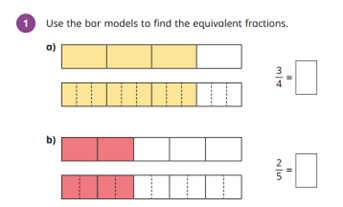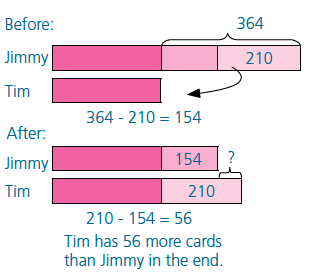Exploring Bar Design Illustration Techniques: A Comprehensive Overview to Imagining Mathematics Concepts
Bar model drawing strategies act as a beneficial resource for both teachers and trainees in visualizing mathematical ideas. These versions streamline complex mathematical relationships, aiding in the comprehension of enhancement, multiplication, department, and subtraction. This guide details effective methods for implementing bar models, promoting energetic involvement and real-world links. As viewers explore the functional applications and training pointers, they will discover exactly how these methods can transform their method to mathematics.
Recognizing the Essentials of Bar Model Drawing
Bar version attracting functions as a powerful visual tool in maths, helping with the understanding of numerical relationships and problem-solving strategies. This strategy entails standing for numbers and their connections via rectangular bars, making it much easier to picture operations such as addition, reproduction, department, and subtraction. Each bar's size represents a specific worth, permitting students to compare amounts and comprehend proportions clearly.
To develop a bar design, one starts by recognizing the issue's essential components, typically simplifying right into parts that can be aesthetically represented. For example, in a basic addition issue, two bars can be attracted, with their lengths standing for the addends. The combined length shows the sum. On top of that, bar designs can be adjusted for more intricate problems, consisting of portions and ratios, by changing the bars accordingly. Grasping these basics lays a strong foundation for effective analytical and much deeper mathematical comprehension.
Benefits of Making Use Of Bar Models in Math
Making use of bar models in maths provides numerous advantages that boost learning and understanding. These graphes help students in grasping complicated principles by breaking them down into manageable elements. Bar designs give a clear structure for showing partnerships between numbers, making abstract ideas much more concrete. They advertise a much deeper understanding of mathematical operations and promote analytical by enabling learners to picture the data they are working with.
Moreover, bar versions support the growth of critical thinking abilities, as trainees need to evaluate and translate the visual details to reason. This method motivates active involvement with the material, reinforcing retention and proficiency of mathematical principles. By fostering a solid foundation in visual proficiency, bar designs empower students to approach different mathematical obstacles with self-confidence. In general, the combination of bar versions right into mathematics education proves beneficial in growing both understanding and analytical capabilities among trainees.
Using Bar Versions to Addition and Reduction
Bar models function as an efficient tool for aesthetically representing addition and reduction issues. By highlighting the partnership between numbers, they enhance understanding and assist in problem-solving. On top of that, real-life applications of these models can aid learners understand mathematical ideas in sensible contexts.
Standing For Enhancement Visually
When students come across addition and subtraction troubles, visual aids can considerably enhance their understanding of these operations. Bar models act as effective devices for standing for addition. By splitting a rectangle into sectors that correspond to the numbers entailed, pupils can visualize the partnership in between the quantities. For example, if a trainee requires to add 3 and 5, they can create a bar separated into 2 areas: one section representing 3 and the other standing for 5. This clear depiction not only simplifies the enhancement procedure however also reinforces the idea of combining amounts. As trainees adjust these aesthetic help, they create a much deeper understanding of addition, leading to improved problem-solving abilities and better confidence in their mathematical capacities.
Subtraction With Bar Versions
Although subtraction is usually regarded as a much more complex operation than addition, bar designs can effectively clarify this process for pupils. By aesthetically representing the amounts entailed, pupils can better understand how numbers relate to one another. In a bar version for reduction, one bar represents the total amount, while an additional shows the amount being subtracted. This visual distinction assists trainees grasp the idea of "eliminating." If a bar shows 10 systems, and one more bar representing 4 units is eliminated, trainees can easily see that 6 units continue to be. This strategy not only cultivates understanding of reduction yet additionally help in creating analytic skills, permitting pupils to picture their mathematical reasoning and boost their general comprehension of mathematical principles.
Real-Life Application Instances
Understanding reduction via bar models lays a structure for applying these techniques in real-life scenarios. In different contexts, such as budgeting or buying, individuals can picture exactly how much money continues to be after costs. If an individual has $50 and spends $20, a bar version can stand for the overall amount and the invested part, showing that $30 is left. Furthermore, moms and dads can use bar versions to aid youngsters recognize the amount of even more things need to be added to complete a collection, such as having 3 apples and requiring 5. This graph streamlines intricate troubles, facilitating understanding and retention. Eventually, bar designs act as effective devices in day-to-day decision-making, enhancing mathematical understanding in functional situations.
Envisioning Multiplication and Department With Bar Designs
In exploring the application of bar models for reproduction and division, it is important to understand their foundational principles. Creating reproduction designs allows learners to imagine partnerships between numbers, while reliable department approaches can be shown via these aesthetic aids. This method improves understanding and problem-solving skills in mathematics.
Comprehending Bar Designs
Bar versions work as a powerful visual device for illustrating the principles of reproduction and department. They make it possible for students to stand for mathematical relationships in an organized format, assisting in a deeper understanding of these procedures. In reproduction, bar versions display groups of equivalent dimension, enabling people to envision the overall quantity when incorporating these teams. Alternatively, in department, bar models help depict how an overall is split into smaller sized, equivalent parts, clearing up the principle of partitioning. By employing these aesthetic help, trainees can grasp the underlying principles of multiplication and division much more successfully. This approach not only enhances understanding however also supports problem-solving skills, making bar models an important property in mathematical education.
Creating Multiplication Models
Creating reproduction versions making use of bar diagrams supplies a clear method for envisioning the process of multiplication. These models allow students to represent multiplication as teams of equivalent components, making abstract ideas extra concrete. For circumstances, to illustrate (3 times 4), a pupil can draw one bar divided right into three equivalent segments, each standing for four units. Additionally, producing a second bar with the exact same size strengthens the understanding of repeated enhancement, as each segment represents one group. This graph not just help in comprehending reproduction however likewise boosts analytic skills. By employing bar models, students can much better comprehend relationships in between numbers and create a durable foundation for much more complex mathematical ideas, bring about increased self-confidence in their abilities.
Imagining Department Approaches

Fixing Word Problems Utilizing Bar Design Techniques

As an example, in a trouble entailing enhancement and reduction, pupils can draw separate bars for each and every amount and after that control them to discover the option. This procedure not only makes clear the issue but additionally cultivates a deeper theoretical understanding. Bar designs can be adapted for numerous kinds of word problems, making them functional across various mathematical topics. Eventually, making use of bar designs can considerably improve pupils' analytic skills by supplying a clear visual path to come to the appropriate solution.
Integrating Bar Models in Various Math Topics
Bar versions can be effortlessly incorporated into numerous mathematics subjects, boosting students' understanding of ideas beyond basic arithmetic. In algebra, these aesthetic tools help in representing formulas and inequalities, making it possible for students to imagine partnerships between variables. When dealing with geometry, bar designs can illustrate the homes of forms and spatial reasoning, assisting students comprehend principles like location and perimeter successfully. In statistics, bar versions facilitate the interpretation of information collections, allowing students to compare quantities and acknowledge fads aesthetically. Additionally, integrating bar versions within measurement topics aids in comprehending devices and conversions by supplying a substantial depiction of amounts. By using bar models across various mathematical locations, teachers can cultivate a deeper comprehension of complicated ideas, consequently boosting problem-solving skills and promoting essential thinking (bar model drawing techniques). click here This flexibility shows the energy of bar designs as a foundational tool for pupils in their mathematical trip
Tips for Training Bar Designs Successfully
Incorporating bar versions right into training methods needs thoughtful approaches to optimize their efficiency. Educators should start by introducing bar designs with basic, relatable instances that pupils can quickly understand. This helps to build self-confidence and knowledge with the principle. Slowly enhancing the complexity of issues enables learners to use their abilities gradually. In addition, instructors should encourage students to develop their very own bar models, advertising energetic involvement and possession of their discovering.
Integrating collaborative tasks can additionally improve understanding, as trainees discuss and address troubles in groups. Continual comments is vital; educators need to offer constructive discourse on students' bar model depictions to direct renovation. Attaching bar models to real-life circumstances enhances their relevance, helping pupils see the sensible applications of their mathematical abilities. By applying these methods, instructors can effectively harness the power of bar designs in their maths instruction.
Frequently Asked Inquiries
Can Disallow Versions Be Made Use Of in Other Topics Besides Mathematics?
Bar versions can indeed be used in numerous subjects past math. They successfully highlight principles in scientific research, social research studies, and language arts, assisting to aesthetically stand for partnerships, processes, and concepts for boosted understanding across self-controls.
What Age Group Is Best Fit for Knowing Bar Designs?
Bar models are best fit for youngsters ages 7 to 12, as they create concrete reasoning abilities throughout this duration (bar model drawing techniques). At this age, pupils can effectively understand abstract ideas through visual representation and analytical methods
Exist Digital Equipment for Creating Bar Designs?

How Can I Assess Pupil Comprehending of Bar Models?
Reviewing trainee understanding of bar models can entail quizzes, empirical assessments, and seminar. Teachers may also analyze students' finished versions and their capability to explain their reasoning, making certain a comprehensive evaluation of understanding.
What Prevail Mistakes When Using Bar Versions?
Common errors when making use of bar designs include misstating quantities, stopping working to properly classify bars, puzzling enhancement and reduction, ignoring to make use of constant ranges, and neglecting the relevance of clear visual separation in between various aspects.
In addition, bar designs can be adjusted for extra complex problems, consisting of fractions and proportions, by adjusting the bars as necessary. Subtraction is typically regarded as an extra complex operation than enhancement, bar versions can properly clarify this process for students. In a bar model for subtraction, one bar stands for the total amount, while an additional shows the quantity being deducted. If a bar reveals 10 devices, and another bar representing 4 units is gotten rid of, pupils can easily see that 6 units remain. When dividing a total into equal groups, students can draw a long bar to represent the whole and then segment it into smaller sized bars that show each team.